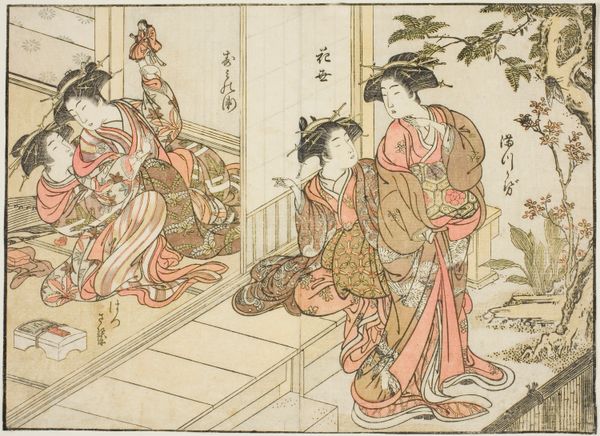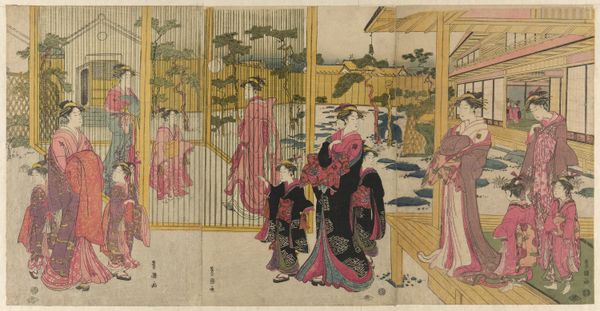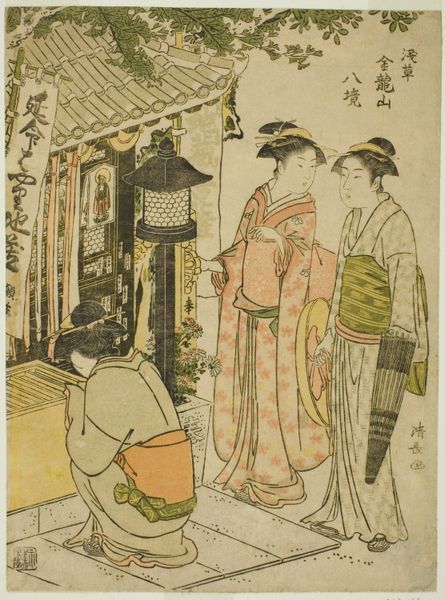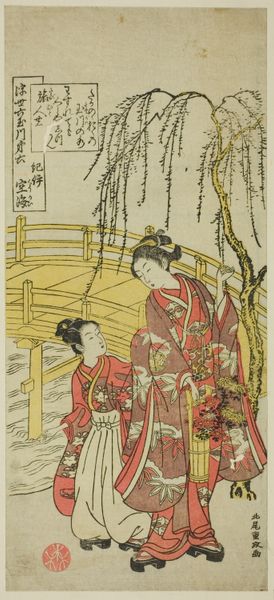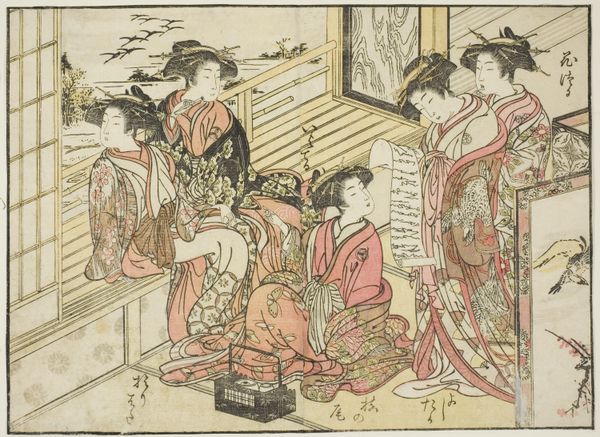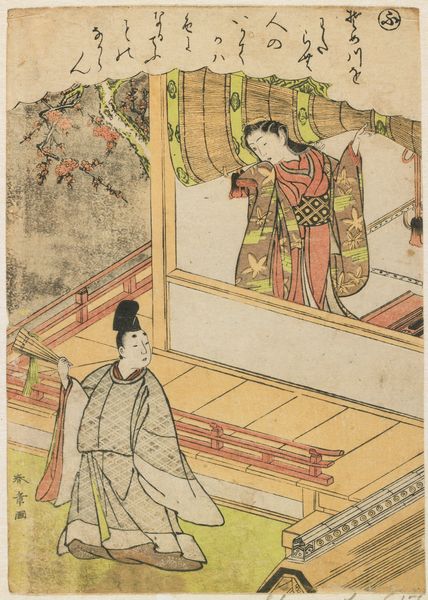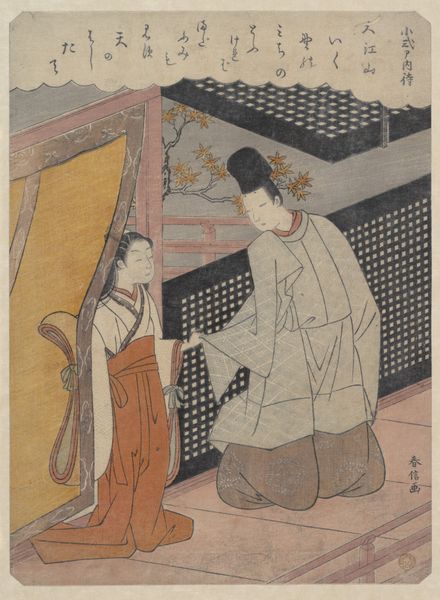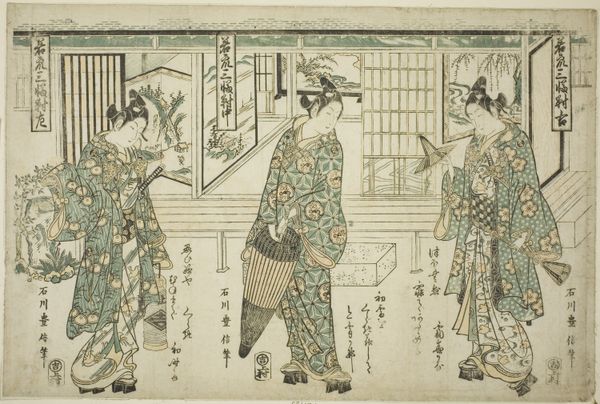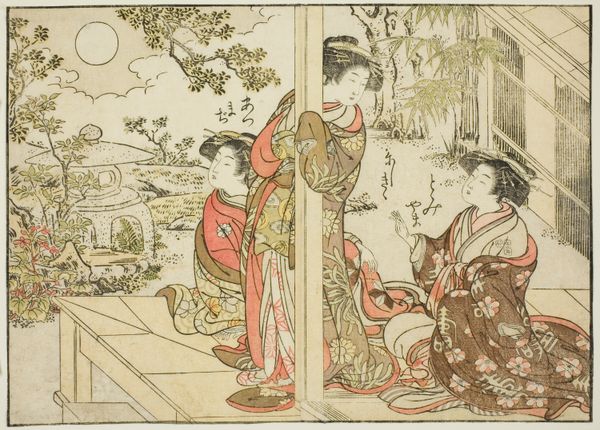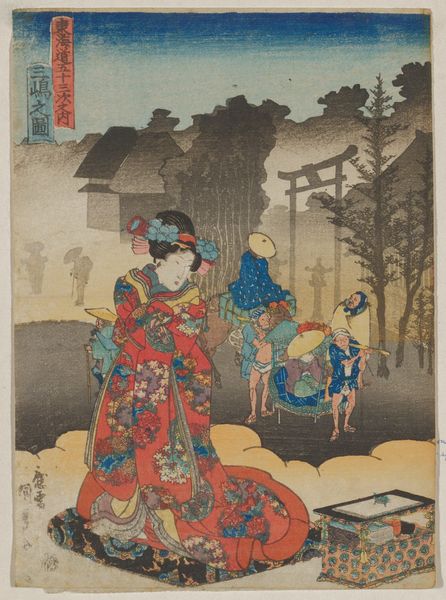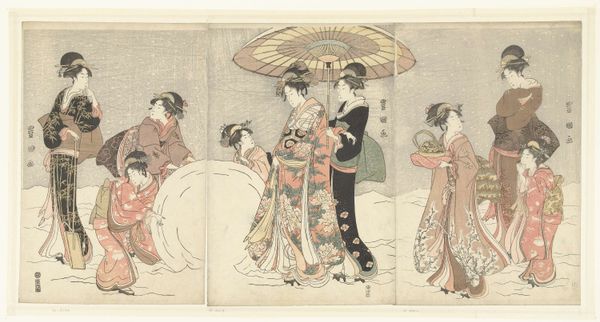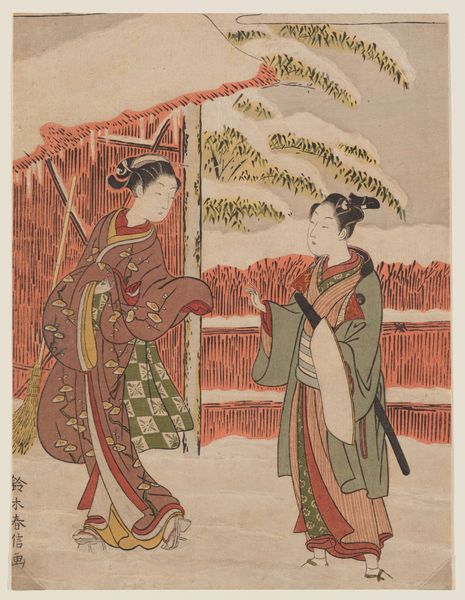
Visitors to the Inari Shrine at Ōji c. 19th century
0:00
0:00
print, ink
# print
#
asian-art
#
landscape
#
ukiyo-e
#
ink
#
genre-painting
Dimensions: 7 1/2 × 20 1/2 in. (19 × 52 cm) (image, sheet, ebangire)
Copyright: Public Domain
Editor: So, this is "Visitors to the Inari Shrine at Ōji," a 19th-century ink and print work by Hokusai, currently housed at the Minneapolis Institute of Art. I find the rendering of figures particularly interesting because of how they are actively participating in the social ritual of shrine visits. How do you read this piece? Curator: It strikes me as a rich site for examining gender and class dynamics within 19th-century Japanese society. The Ukiyo-e genre often presents carefully constructed images of women, and the way they're positioned within the landscape and the social context is very deliberate. What do you notice about the figures’ attire and their interactions? Editor: Well, they seem dressed in finer fabrics and appear to be leisurely strolling; not really performing any strenuous activity... It is almost like they are flaunting a degree of status. Curator: Exactly! These signifiers point towards a certain class enjoying relative privilege. Their presence at the Inari Shrine becomes an act of both devotion and display. Now consider this: How does Hokusai, through his artistic choices, potentially reinforce or subvert existing power structures by representing these women in this manner? Editor: I suppose by depicting this everyday activity, Hokusai invites viewers to consider the role of women within these established social structures. He’s capturing a moment that reflects the culture of his time but through the very act of representation might be prompting us to analyze those dynamics. Curator: Precisely! And beyond gender, how do you see elements of class subtly conveyed within the work's composition? Editor: I see now! Their leisurely poses, rich fabrics, and engagement in shrine visits, when analyzed critically, illuminate aspects of social stratification in 19th century Japan, especially when you think about who *isn't* depicted. Thanks so much! Curator: It has been a pleasure! Examining the layered narratives within art such as this print reveals insights into identity, societal dynamics, and the role of representation in shaping cultural understanding.
Comments
No comments
Be the first to comment and join the conversation on the ultimate creative platform.
